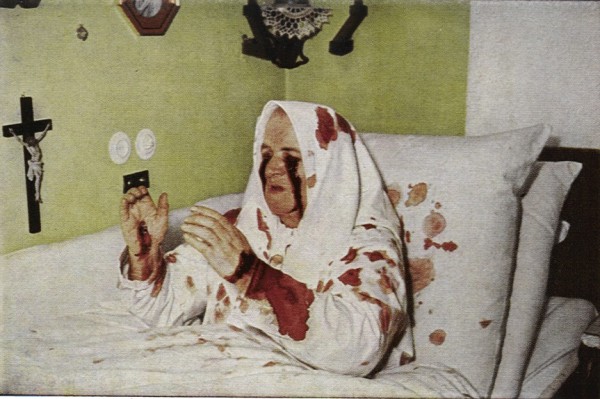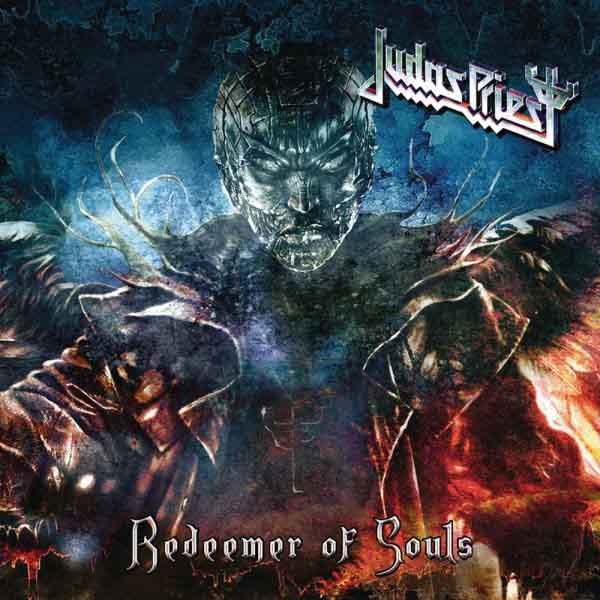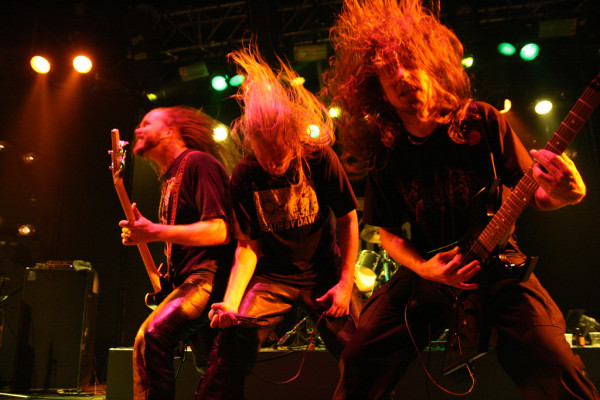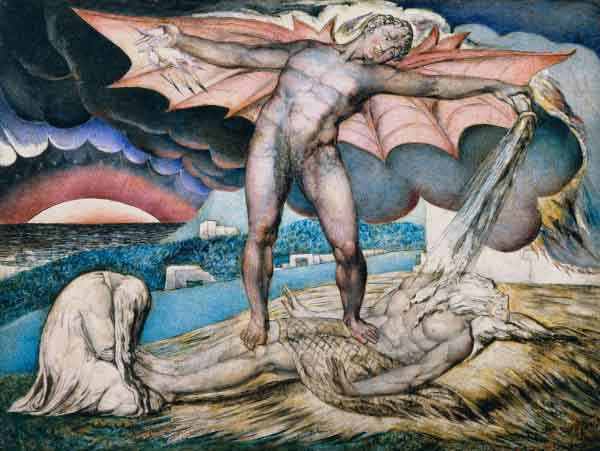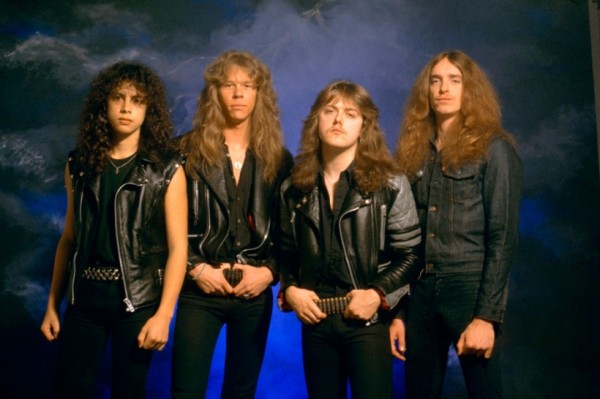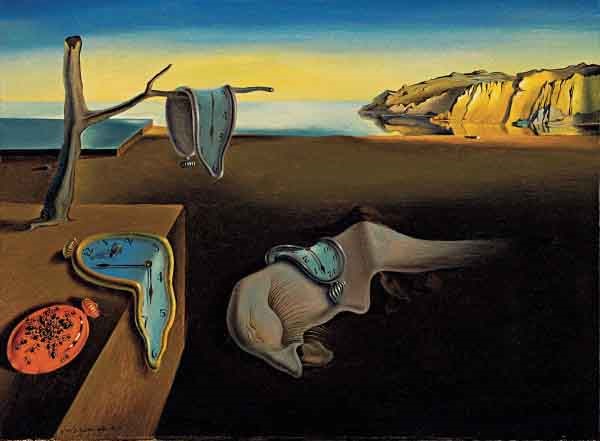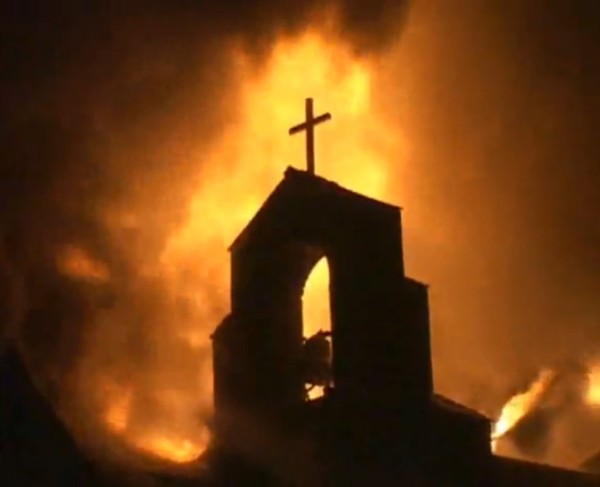Assuredly, I say to you, all sins will be forgiven the sons of men, and whatever blasphemies they may utter; but he who blasphemes against the Holy Spirit never has forgiveness, but is subject to eternal condemnation. — Mark 3:29
Many metal bands feature occultist or Satanic imagery and lyrics. However, some metal bands took this Bible verse as a challenge and created blasphemy on a theological level, denying God with a philosophical basis.
Since metal has always been fervently anti-dogma and a firm believer in a boundaryless existence, the notion of sin is, in itself, a sin. Here are five anthems of rejection that took the final step and committed the unpardonable sin.
http://www.youtube.com/watch?v=w9P99BCrKgc
Incantation – “Rotting Spiritual Embodiment” (Onward to Golgotha)
Taking a mortalistic approach, Rotting Spiritual Embodiment claims that the Holy Spirit dies with the body that it inhabits, thus affirming an absence of all metaphysics and a sheer physical basis to life itself. This form of materialism proves more dominating than even atheism as it denies the basis for a holy presence and argues instead that it is mere physical illusion. The crushing and darkened power chords seem to compel the embodiment — the physical form of the spirit — further and further into obscurity.
Holy apparition, seeking death to save.
Sins of the flesh, the cadaver is unfit.
Penetrate the mind and body, spirit is incarnated.
Spiritual entrapment.
Spiritual deformity…
Foolish ghost of god.
Embodied with the putrid corpse.
Trapped within the flesh.
Forever rots in misery…
Morbid Angel – “Blasphemy” (Altars of Madness)
A call to arms for blasphemy and a declaration of a life free from the clutches of religious dogma, this song takes a straightforward approach to blasphemy through invective condemning God and arguing for his invalidity. It also directly blasphemes the holy spirit in the chorus. Complete with Satanic and Thelemic philosophy, this is a sonic symphony straight from the fiery depths.
I am the god of gods
Master of the art
I desecrate the chaste
Writhe in the flesh
Blasphemy
Chant the blasphemy
Mockery of the messiah
We curse the holy ghost
Enslaver of the weak
God of lies and greed
God of hypocrisy
We laugh at your bastard child
No god shall come before me
Blaspheme the ghost
Blasphemy of the holy ghost
Do what thou wilt shall be the whole of the law
Rebel against the church
Drink from the chalice of blasphemy
Rise up against the enslaver
Immolation – “I Feel Nothing” (Here in After)
Immolation, while anti-religious, never took much of a Satanic approach to their opposition. They present their views from a more atheistic standpoint, and in the pulverizing song, “I Feel Nothing,” Immolation pose the question: Where is the Holy Spirit? The song describes a person who cannot feel the Holy Spirit within them and they refuses to force themselves to believe, so they reject its existence along with the rest of the trinity.
Your prayers,
I don’t feel them in my heart
It is not hate
That I stare coldly at the son of god
I can not force the blood of Christ
To flow through me
God is love and his love is dead
Drown your sorrows in prayer
But your prayers will never change the world
I separate myself
From those who chase the spirit
I can’t fall to my knees
And pretend like all the rest
This is a soul that doesn’t need saving
Their paradise not mine; an illusion I will not believe
Divine presence of perfection, turns sour in my gaze
Why should I feel compassion for the suffering of your God
For all the pain he allows, I give him what he deserves
In the name of the Father,
In the name of the Son
Where is the Holy Spirit, I feel nothing
As I stare upon the crucifix, I feel nothing for a God I never knew
I refuse to embrace, and live by his word
I take not of his body
I take not of his blood
I don’t need salvation
Or his forgiveness
I don’t want his kingdom
My kingdom is here
http://www.youtube.com/watch?v=AEb8S49w-Oc
Deicide – “Behead the Prophet (No Lord Shall Live)” (Legion)
When you think of blasphemous death metal, Deicide undoubtedly comes to mind among the first few entries. Not only does the band name advocate the murder of God but the entire approach of the band denies any form of inherent or mystical order. In “Behead the Prophet (No Lord Shall Live),” Deicide describe the Holy Spirit as foredoomed and proclaim a devilish victory over the holy.
Deny resurrection, behead the Nazarene son
Foredoomed holy spirit, our war at last be won
Legion crush Jehovah, see through the faceless dog
Untie our world from Satan
You know it can’t be done
Wipe away this world of unworth
Decapitation, Satanic rebirth
Off with his head to sever his soul
Beheaded prophet the suffer is yours
“Forever…..”
Virgin, mother murdered, once warned but now is dead
Destroyed heaven’s kingdom, in flames the righteous fled
Legion, thou has waited, to face the sacred dog
Satan’s revelation, this world will always be ours
End of god the way it must be
Behead the prophet, let Satan free…
No god, no lord shall live
What always has should never been
No god, no lord shall live
Behead the prophet and we win
No man to begotten, infant Jesus dead
End of god forever, cast among the souls of Hell
Thou who has imprisoned, suffer by your own demise
Execrate the revelation, MASTER SATAN RISE!
Deny resurrection, behead the Nazarene son
Foredoomed holy spirit, our war at last be won
Legion crush Jehovah, see through the faceless dog
Untie our world from Satan
You know it can’t be done
No god, no lord shall live
What always has should never been
No god, no lord shall live
Behead the prophet and we win
No man to begotten, infant Jesus dead
End of god forever, cast among the souls of Hell
Thou who has imprisoned,
Execrate the revelation,
MASTER SATAN RISE!
Havohej – “Dethrone the Son of God” (Dethrone the Son of God)
Concluding this list is a cold and blasphemous sermon from the great Paul Ledney of Profanatica, Havohej, Incantation and Revenant among others. To go too far in depth about this piece would be to undermine its experiential value to new listeners. I’ll say only this: “Dethrone the Son of God” is the spirit of rejection translated into a litany embracing hell over the “pure” but delusional spirit of believers.
Rip the sacred flesh
Sodomize the holy asshole
Drink the red blood of the mother of earth
Masturbation on the dead body of Christ
The king of Jews is dead
and so are the lies
Vomit on the host of Heaven
Masturbate on the throne of God
Break the seals of angels
Drink the sweet blood of Christ
Taste the flesh of the priest
Sodomize holy nuns
The king of Jews is a liar
The Heavens will burn
Dethrone the son of God
God is dead
Holyness is gone
Purity is gone
Prayers are burned
Covered in black shit
Rape the holy ghost
Unclean birth of Jesus Christ
Heaven will fall
Fuck the church
Fuck Christ
Fuck the Virgin
Fuck the gods of Heaven
Fuck the name of Jesus
Tags: apostasy, blasphemy, Heavy Metal, heresy, Occultism, satanic heavy metal, Satanism
